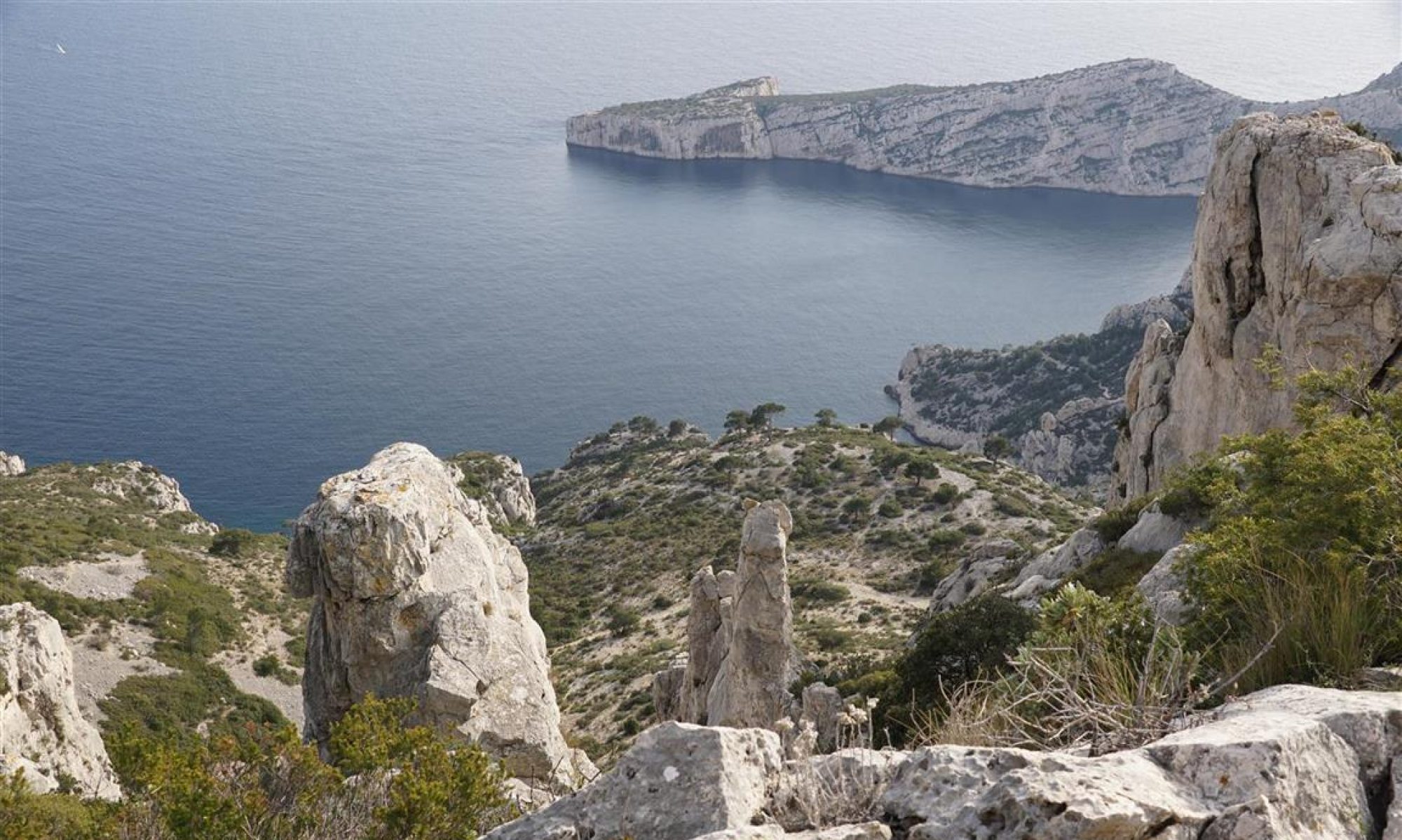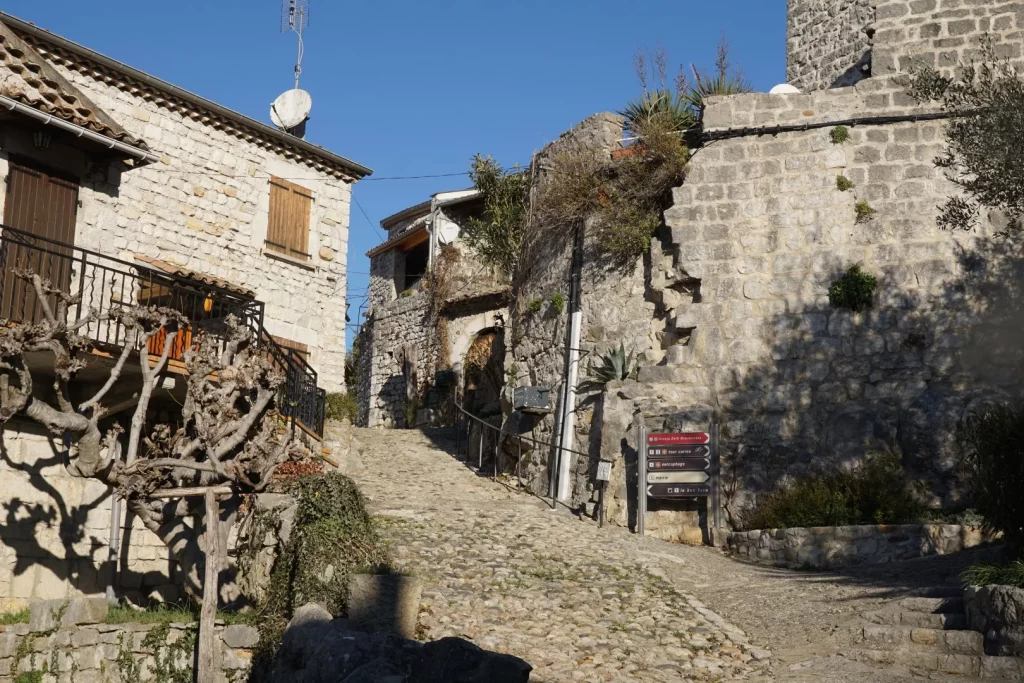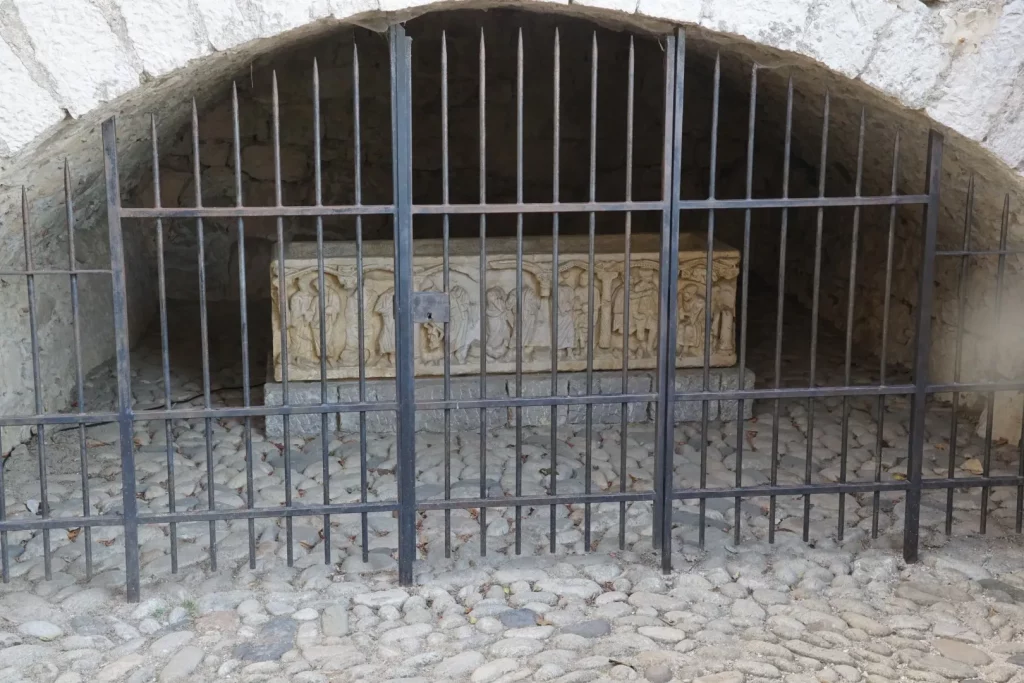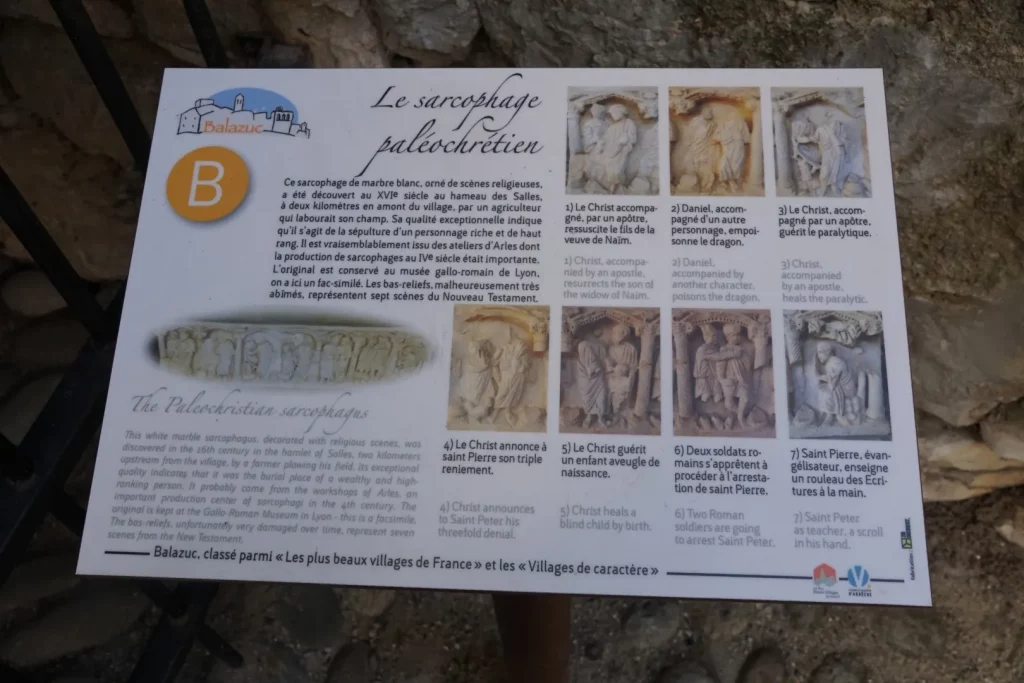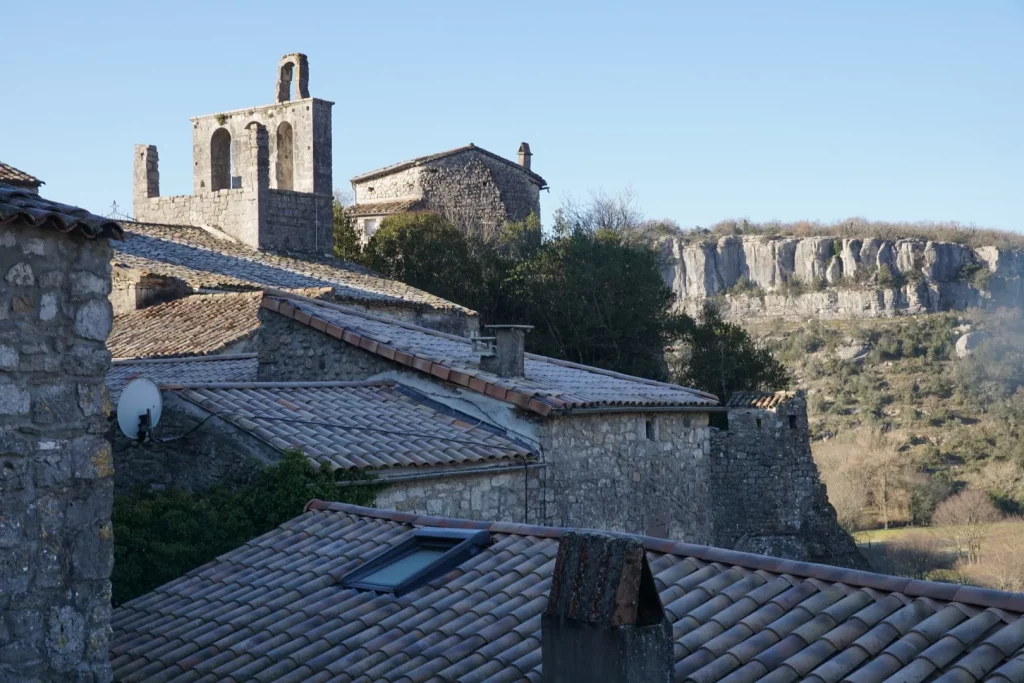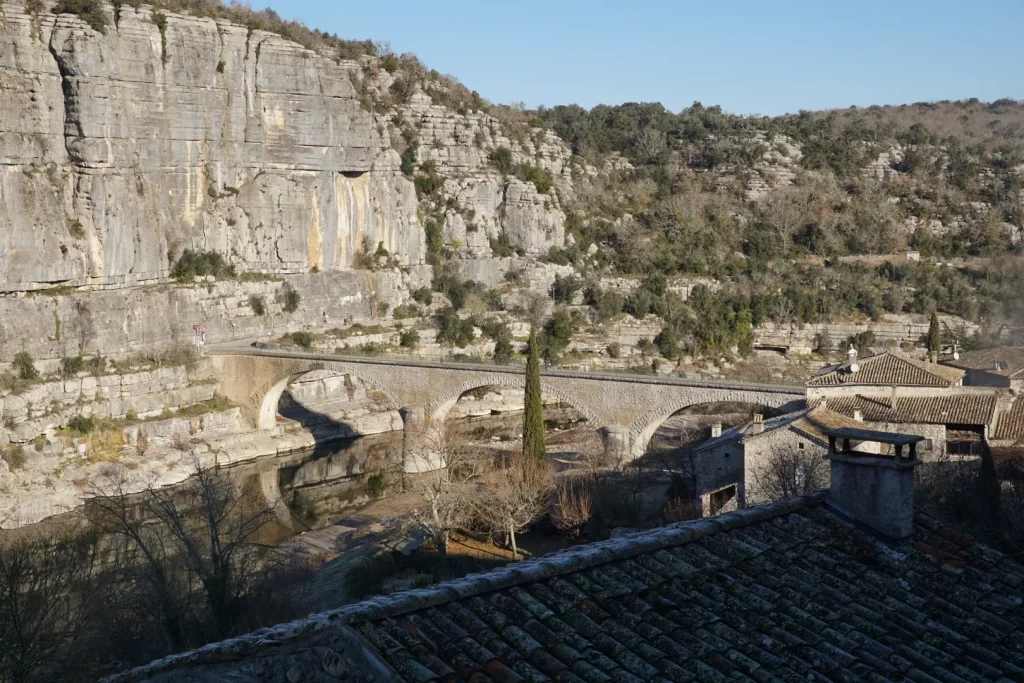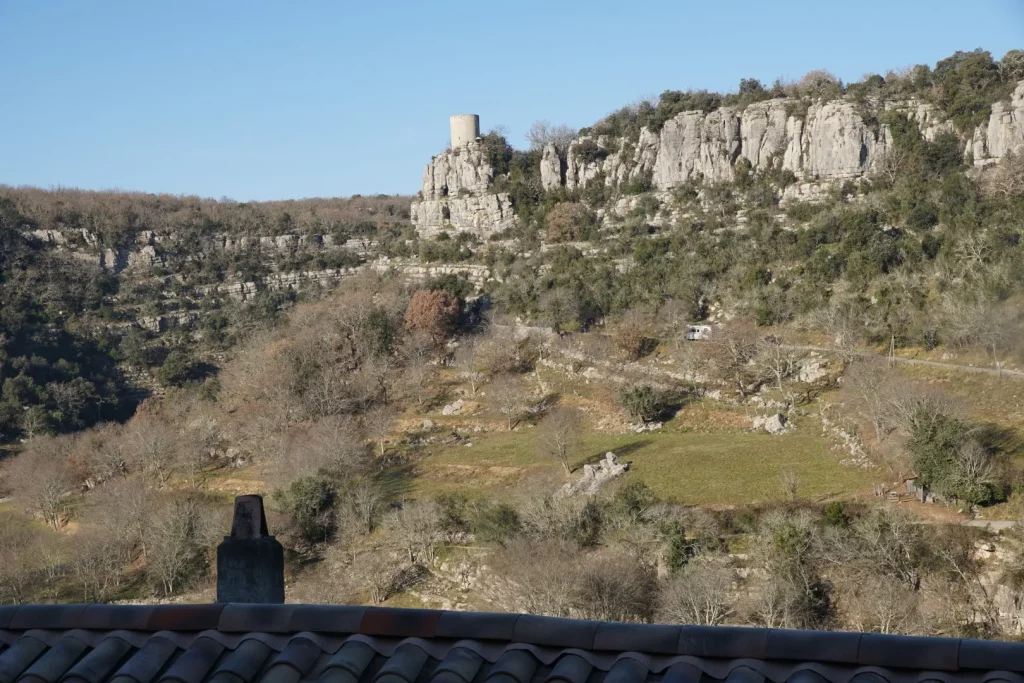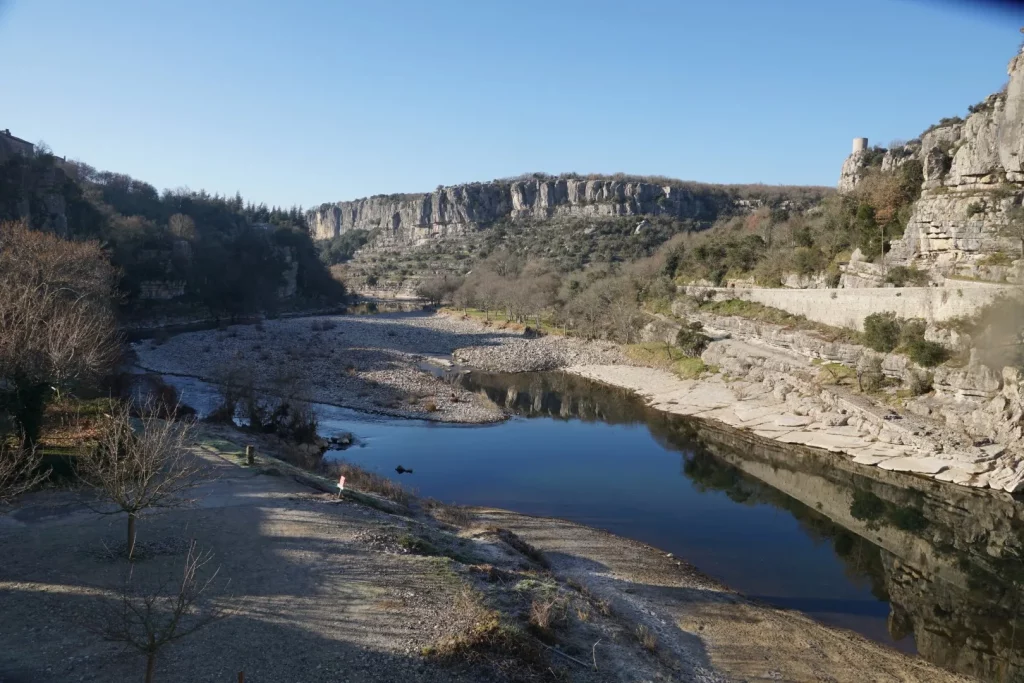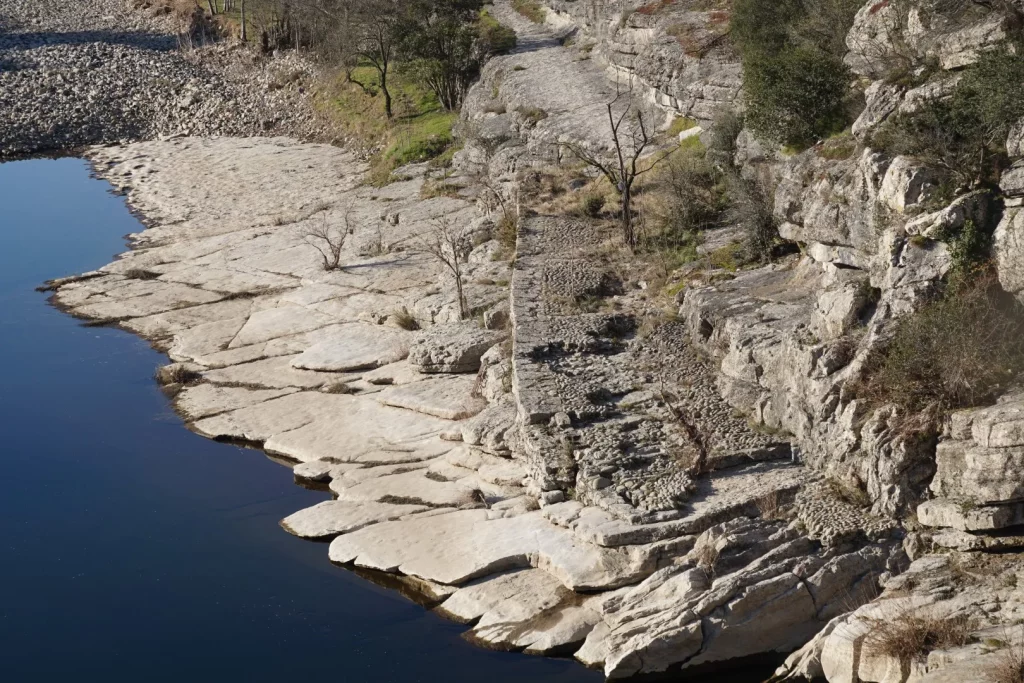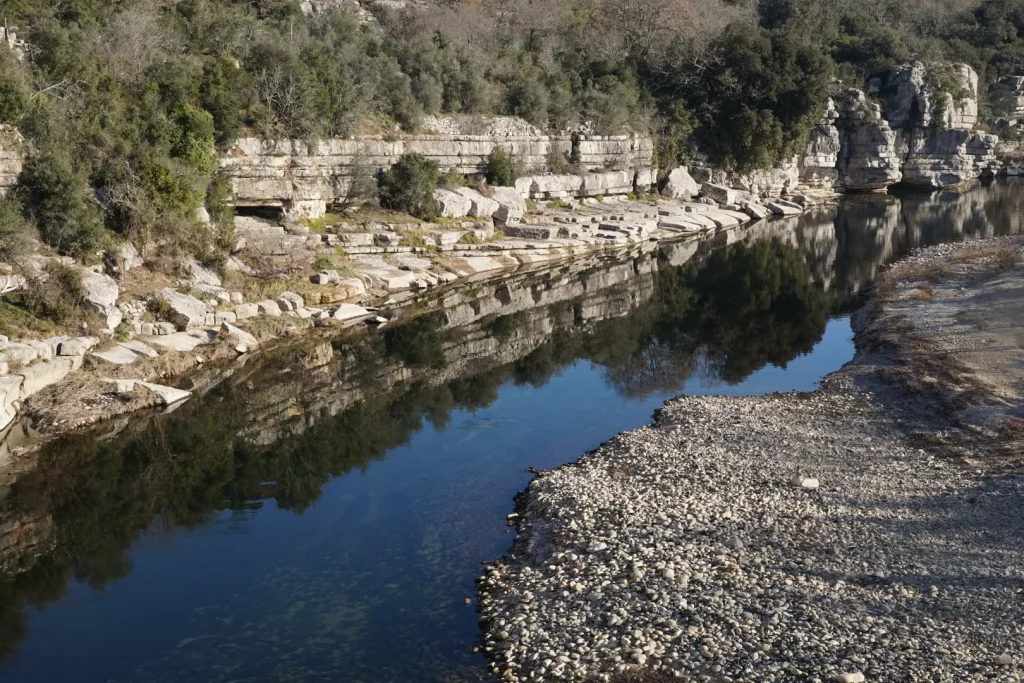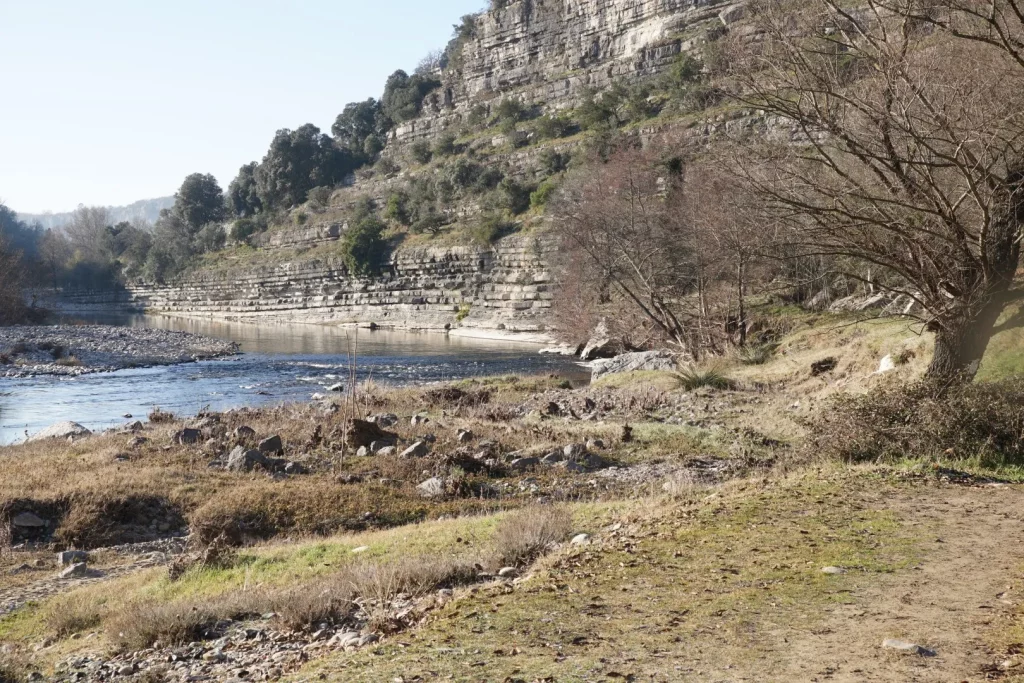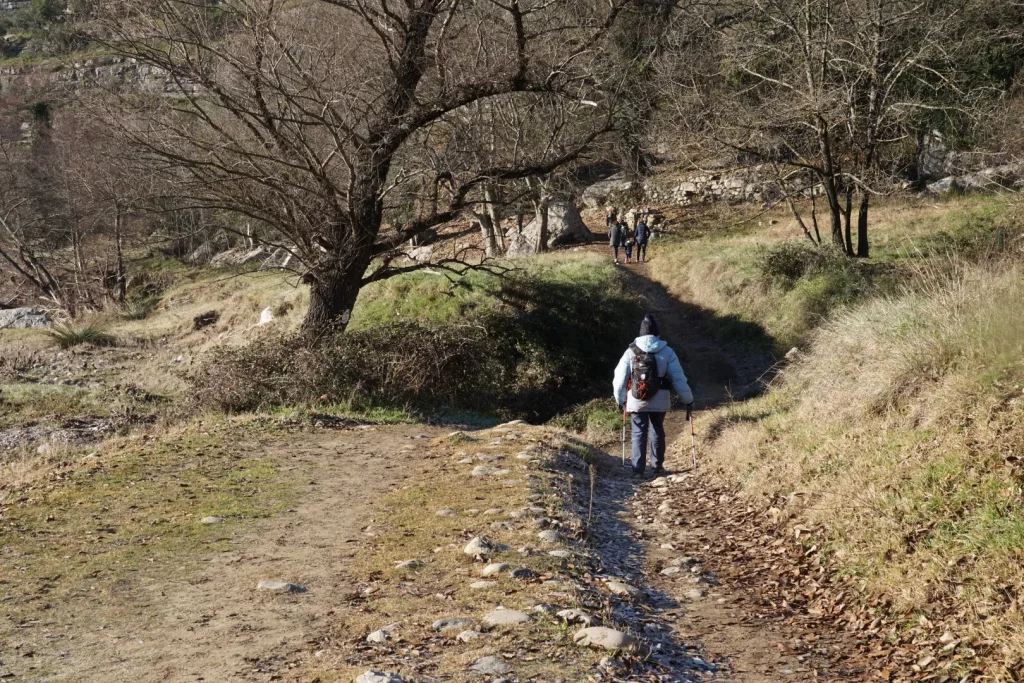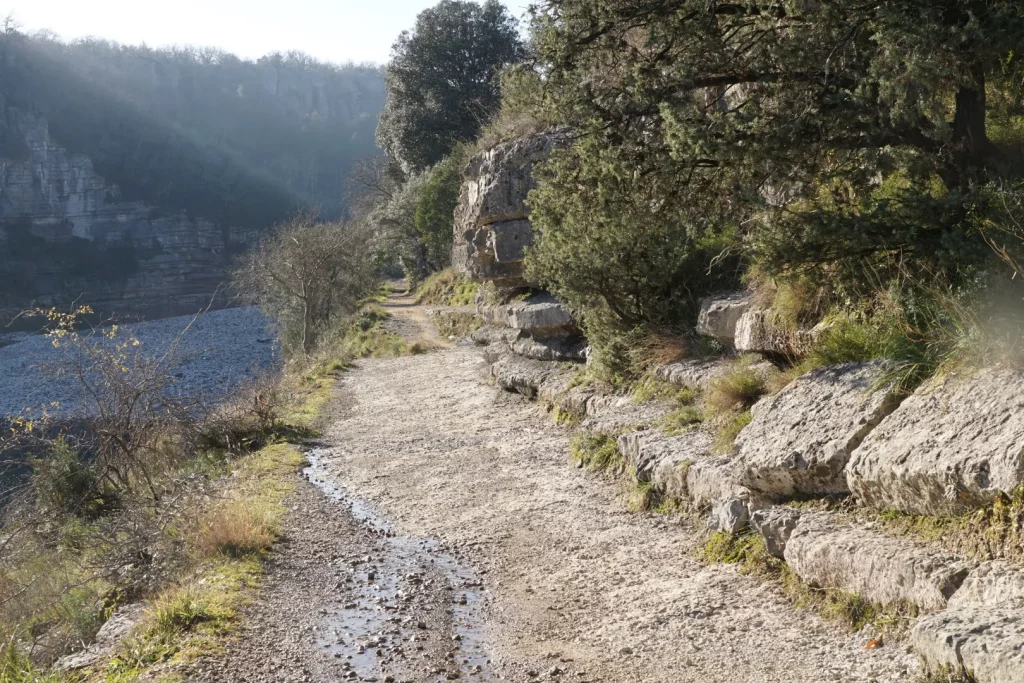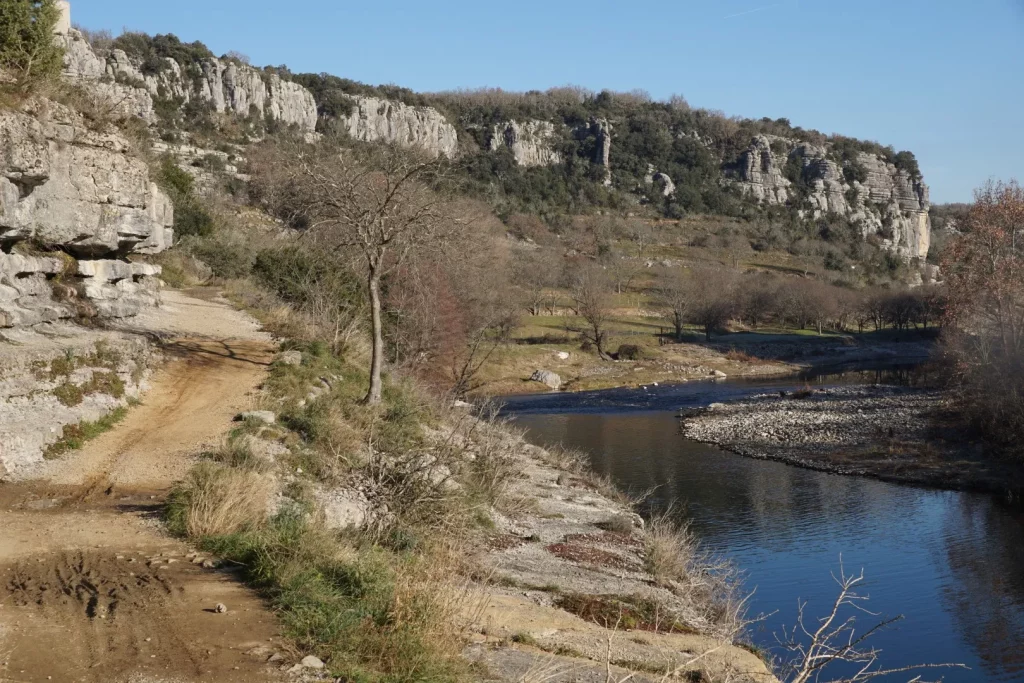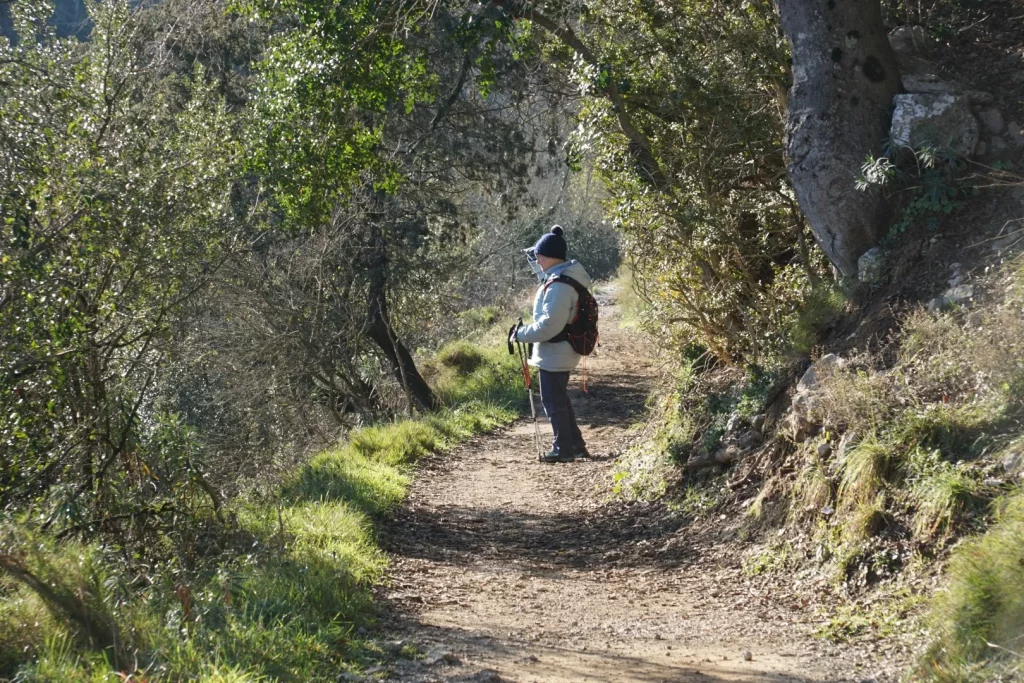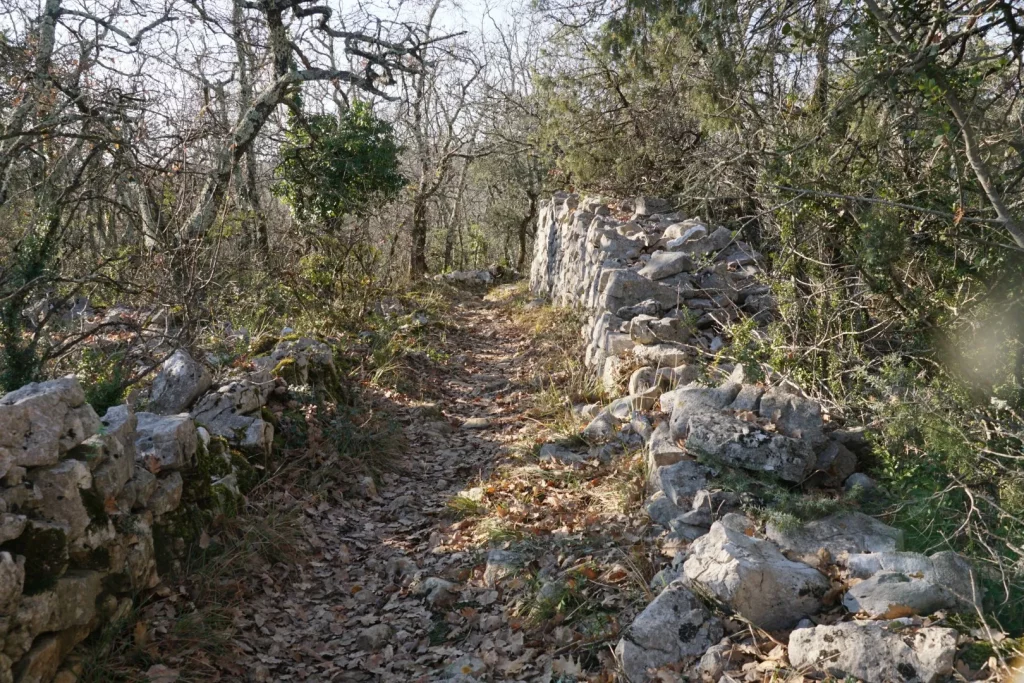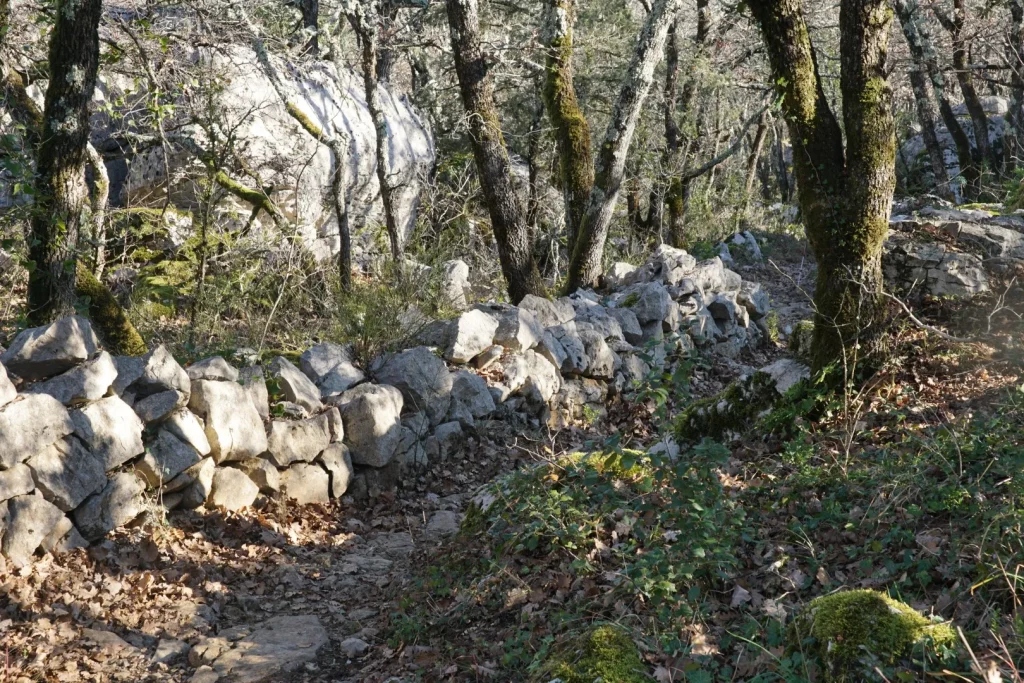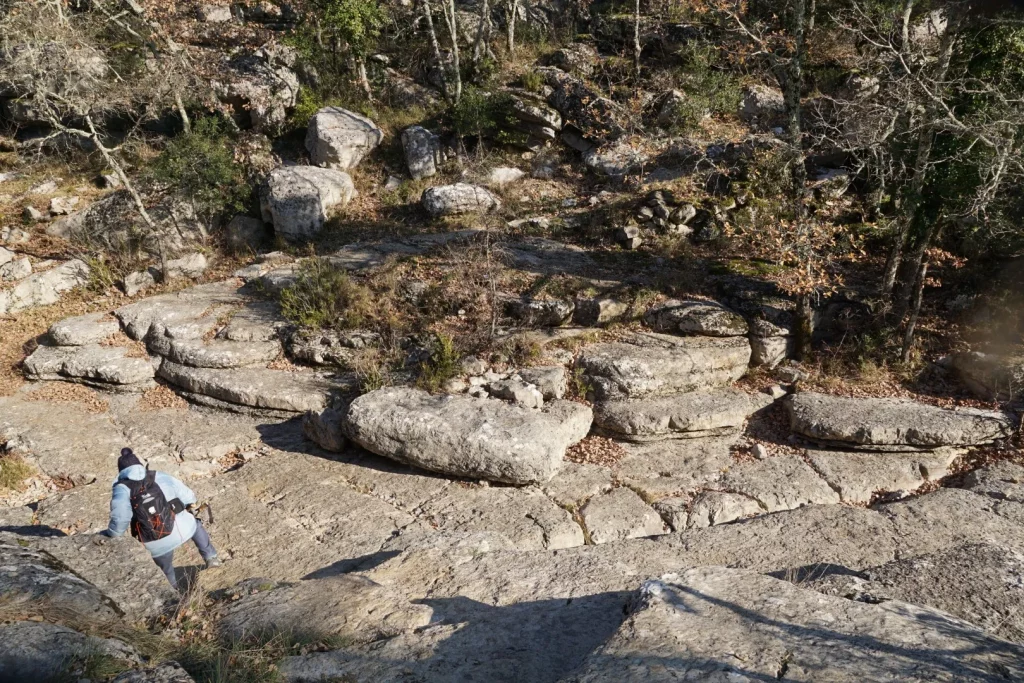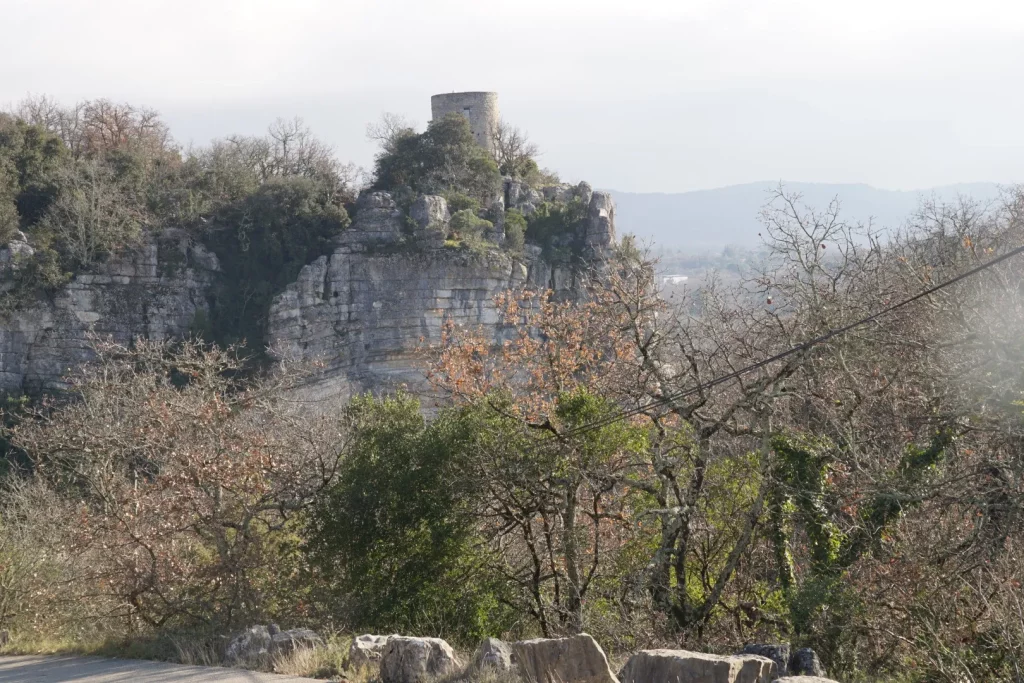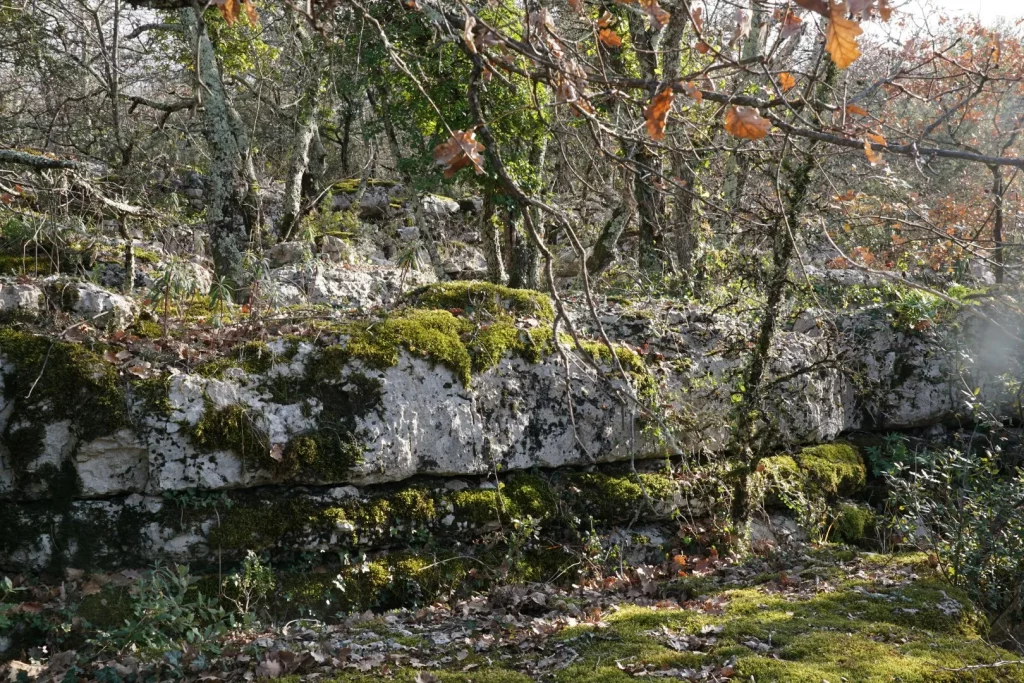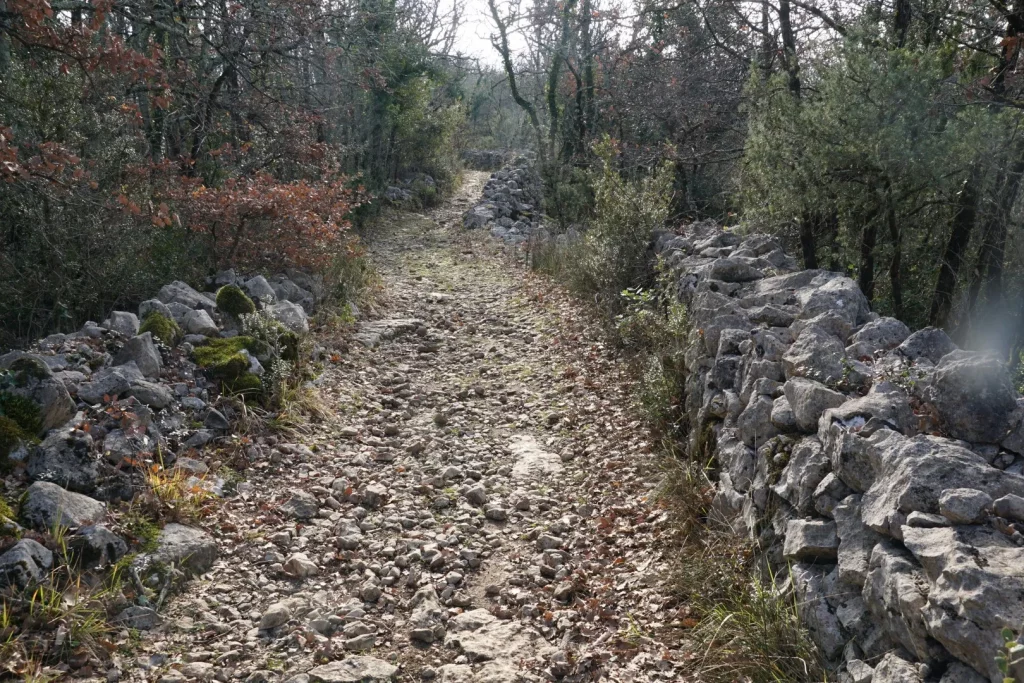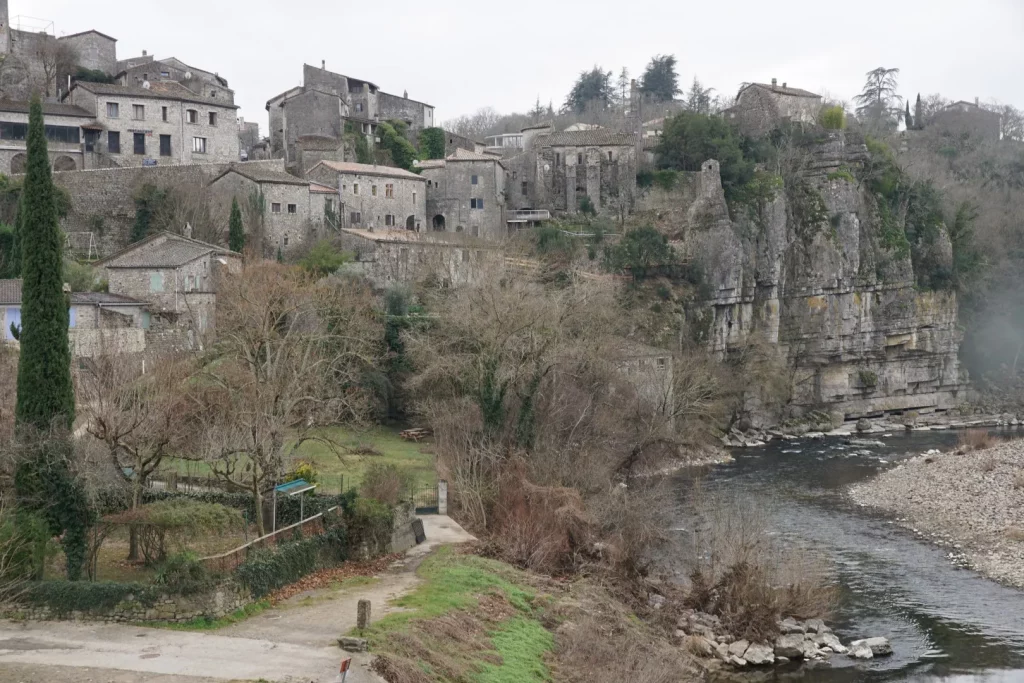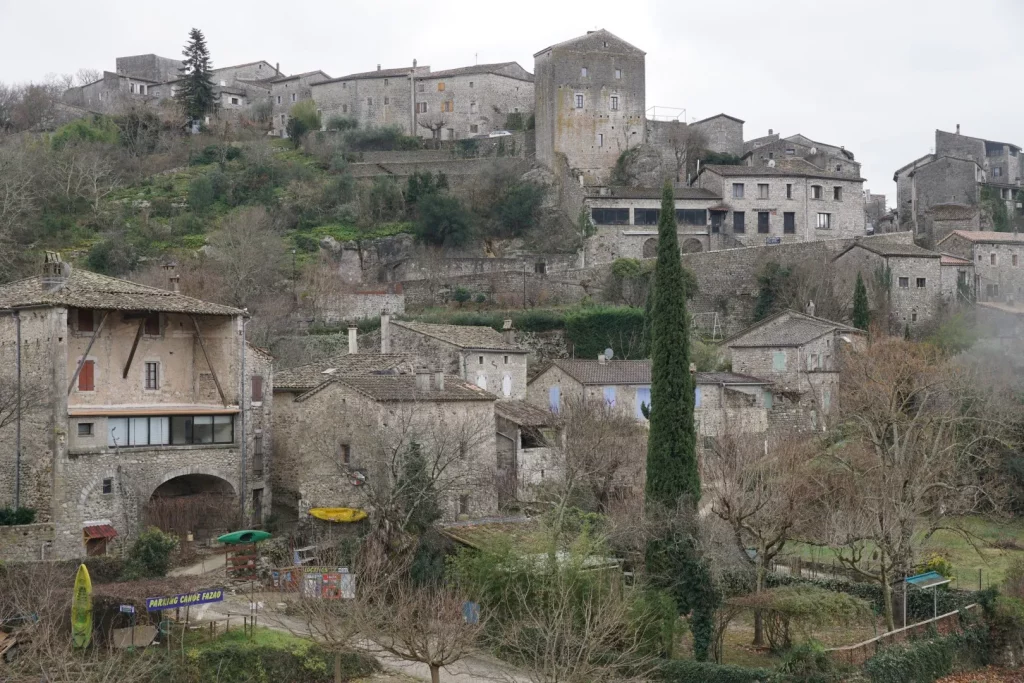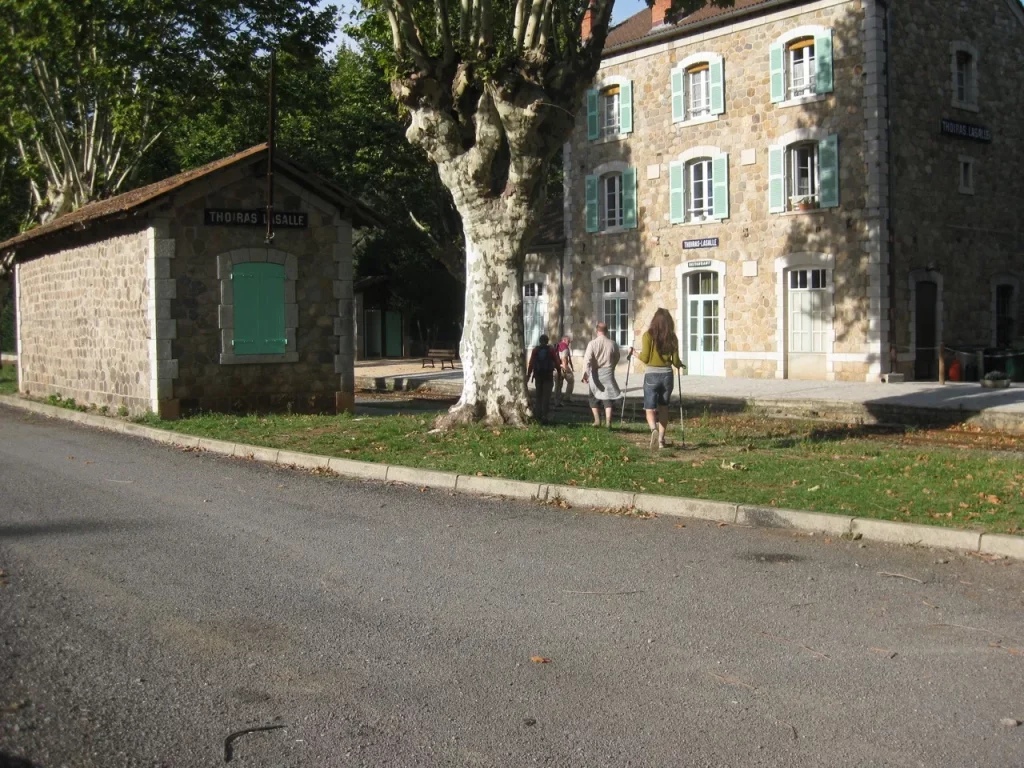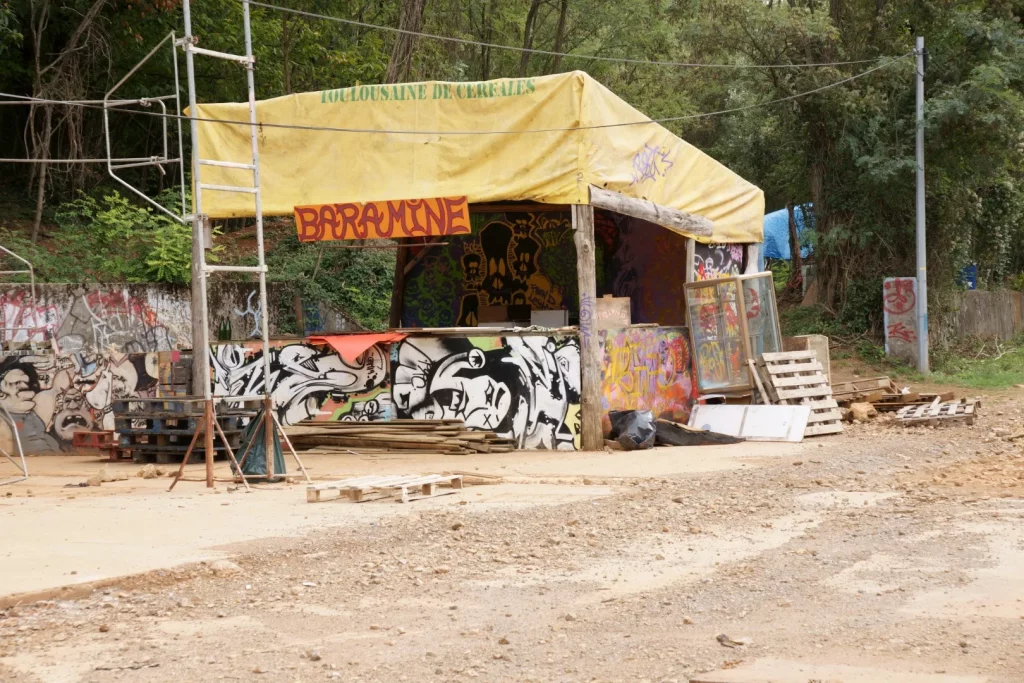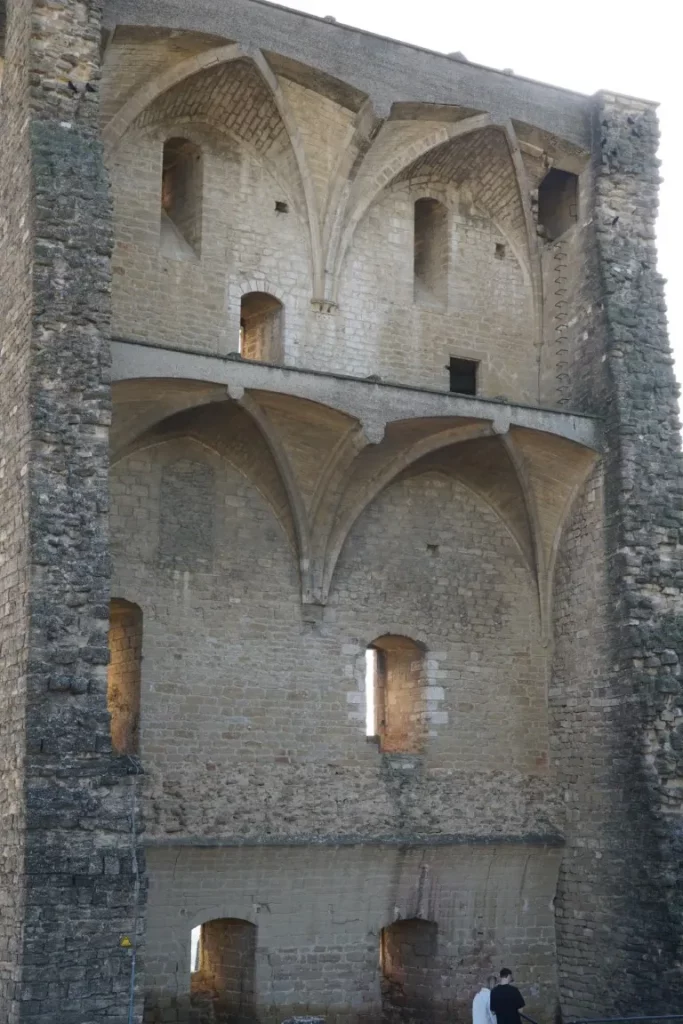
On a November 1st holiday, what better idea than to take a stroll through the vineyards. We chose the village of Châteauneuf-du-Pape. This village, known for its wine growing, should also be better known for its landscapes and historical heritage – starting with the château itself, which dominates the village. Built in 1317, the château has an extremely eventful history. Pampered by the Popes during their presence in Avignon, the château was variously sold, abandoned, occupied by the Huguenots during the 16th century wars of religion and then the Germans in the 20th century. It was the latter who, fleeing Provence in 1944, detonated an ammunition depot, leaving the château as it is today (a large standing wall facing south and the exposed interior of the castle keep facing north).
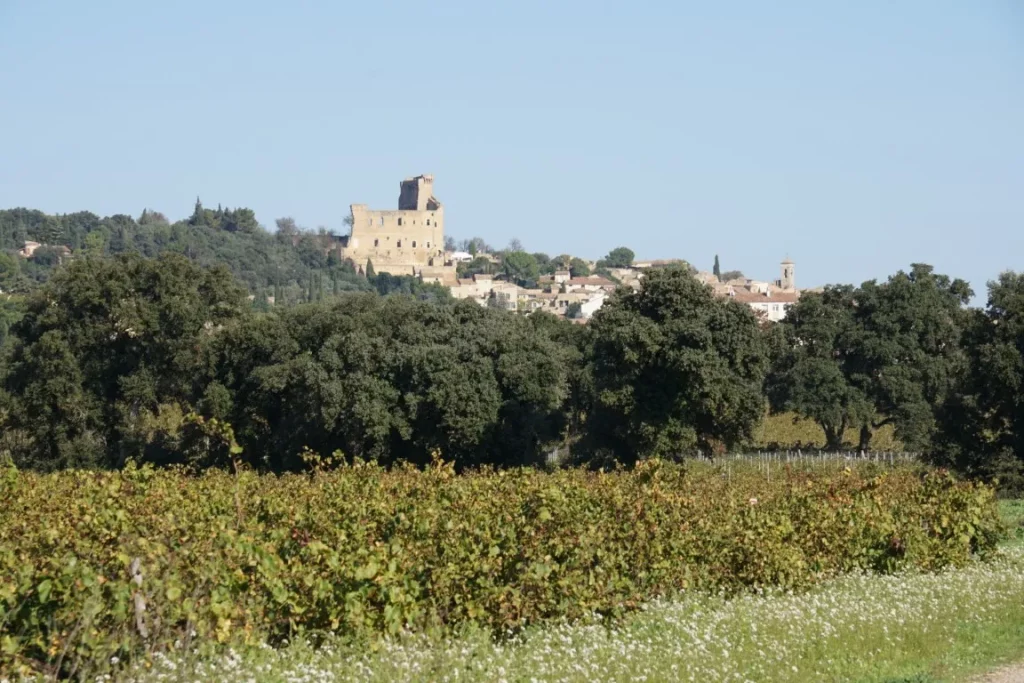
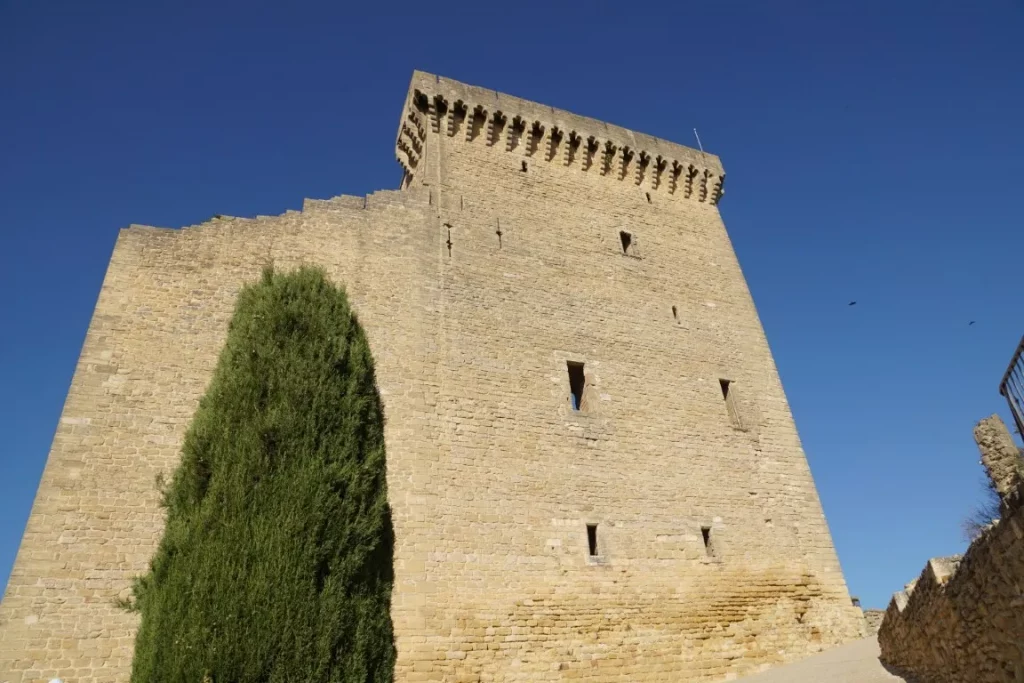
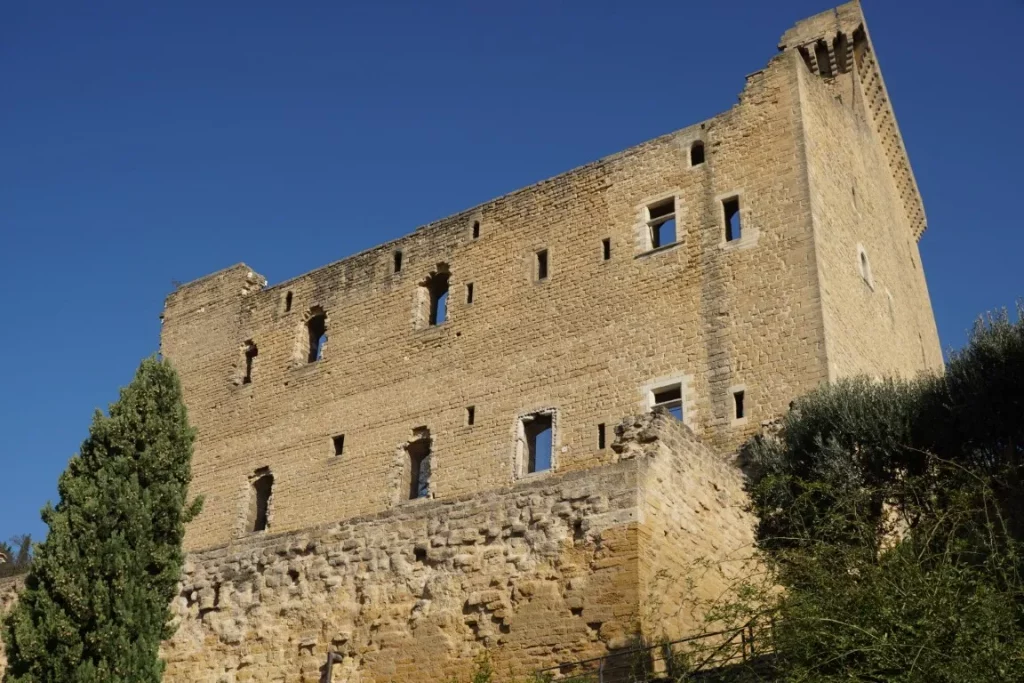
Our tour starts from the parking area at Place de la Renaissance in Châteauneuf (market on Fridays) and winds through the town to the hilltop château. After climbing the steps and circling around the château, we head on along a ridgeline and then downhill through the vineyards to reach the Rhône river plain. Here, after a few kilometers, we arrive at another château, the Château de l’Hers. This château, which could be described as an old “château du Pape”, features a well-constructed keep and a fortress wall still standing on top of a rock right on the banks of the main watercourse of the Rhône. The château was apparently built on an island in the middle of the Rhône but today, its position on the ile de l’Oiselet appears to be right on the left bank of the river. A curious anecdote – the château was an enclave of Languedoc on the left bank of the Rhône in the Middle Ages, but is now well within the Vaucluse departement. The property, now privately owned, was once used to police Rhône river traffic and collect tolls. (How else could one finance oneself in the Middle Ages?)
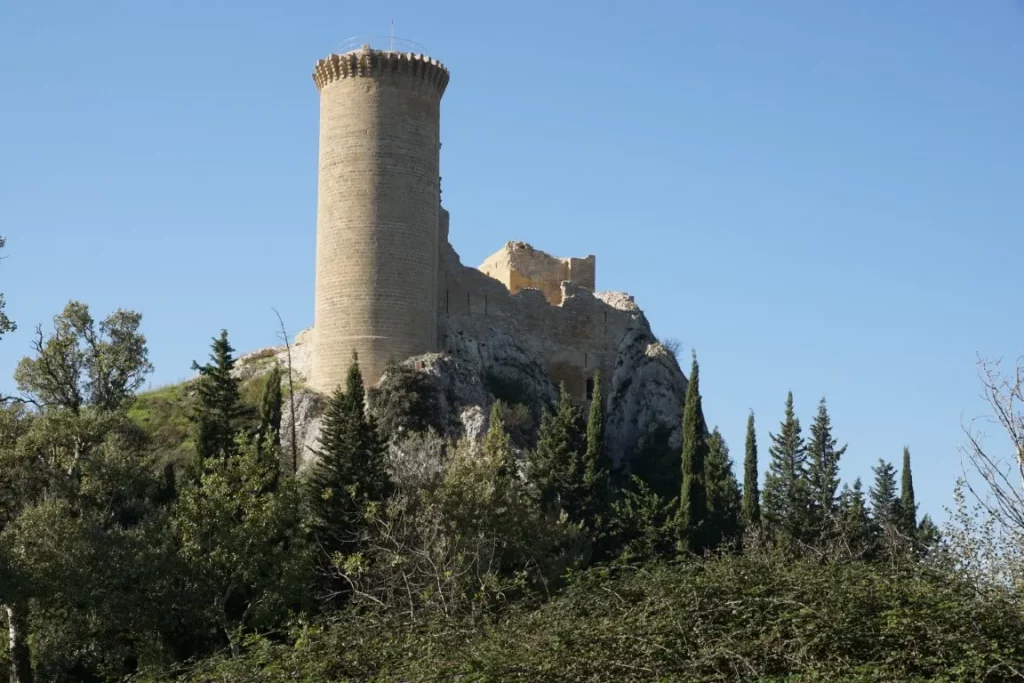
After a glance over the Rhone embankment – the river is not in flood this day – we walk for a long spell along the left bank of the Rhone’s minor branch, past old lime kilns and then branch off directly to return to our starting point. On this last stretch, there are beautiful views over the village of Châteauneuf, with Mont Ventoux in the background.
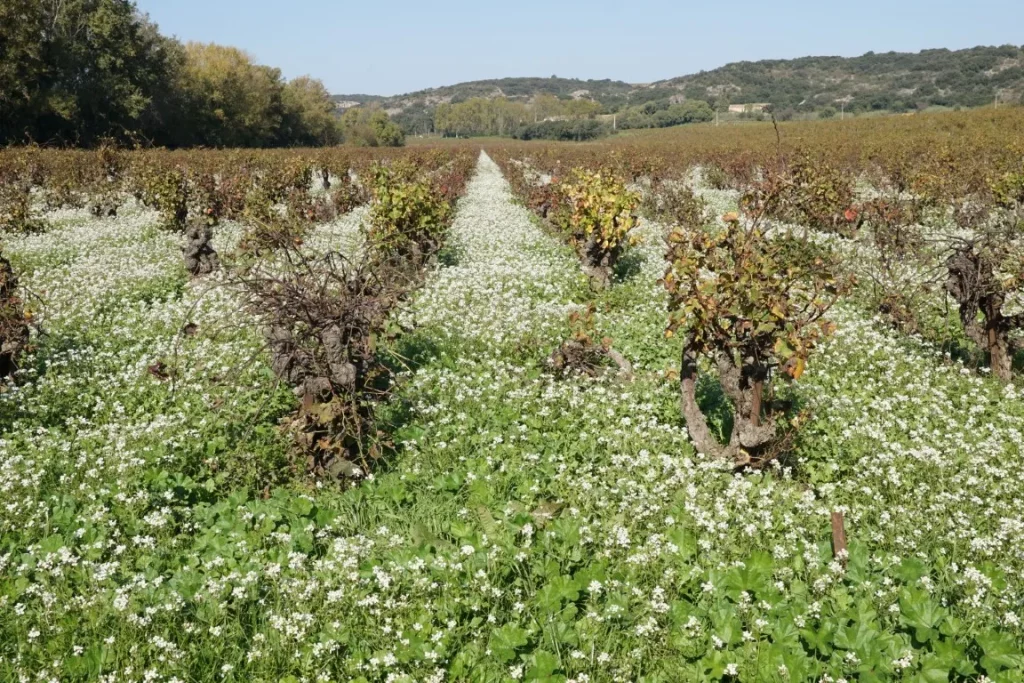
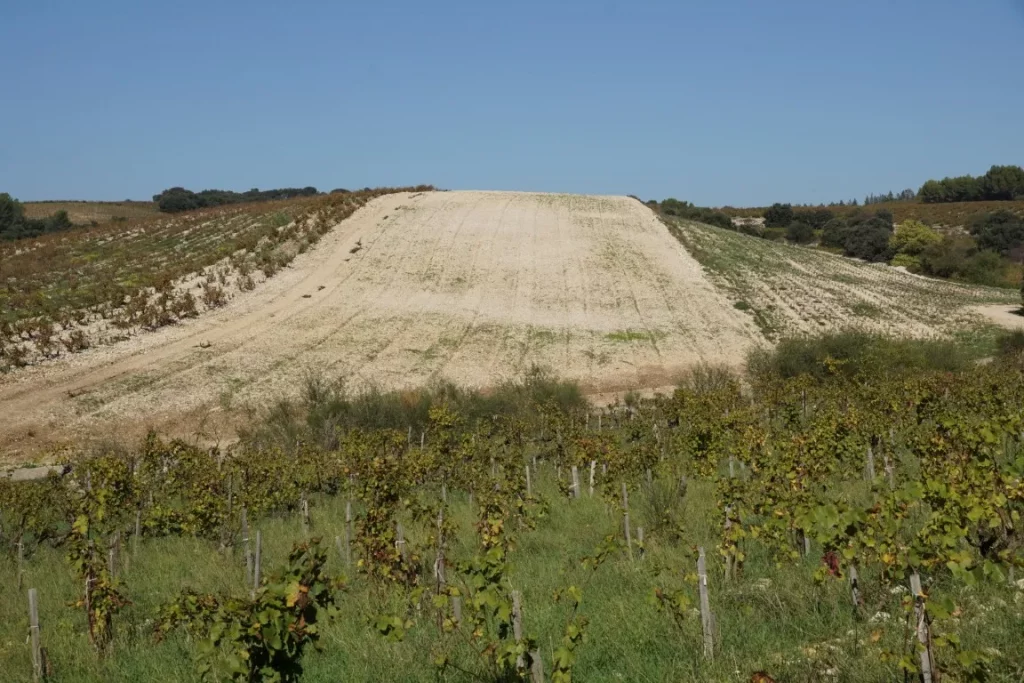

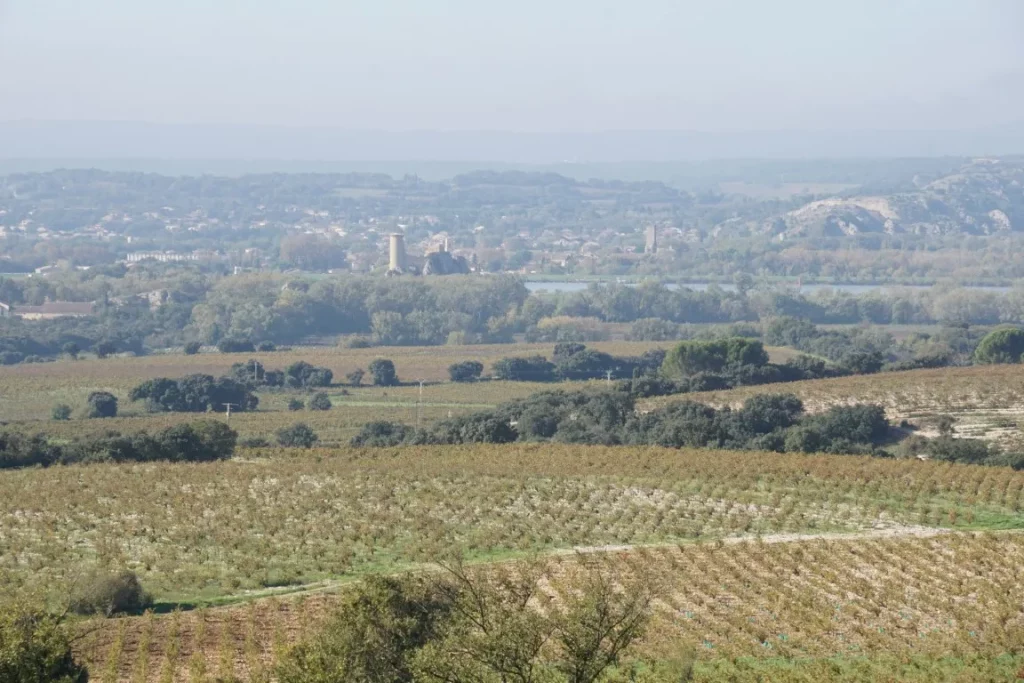
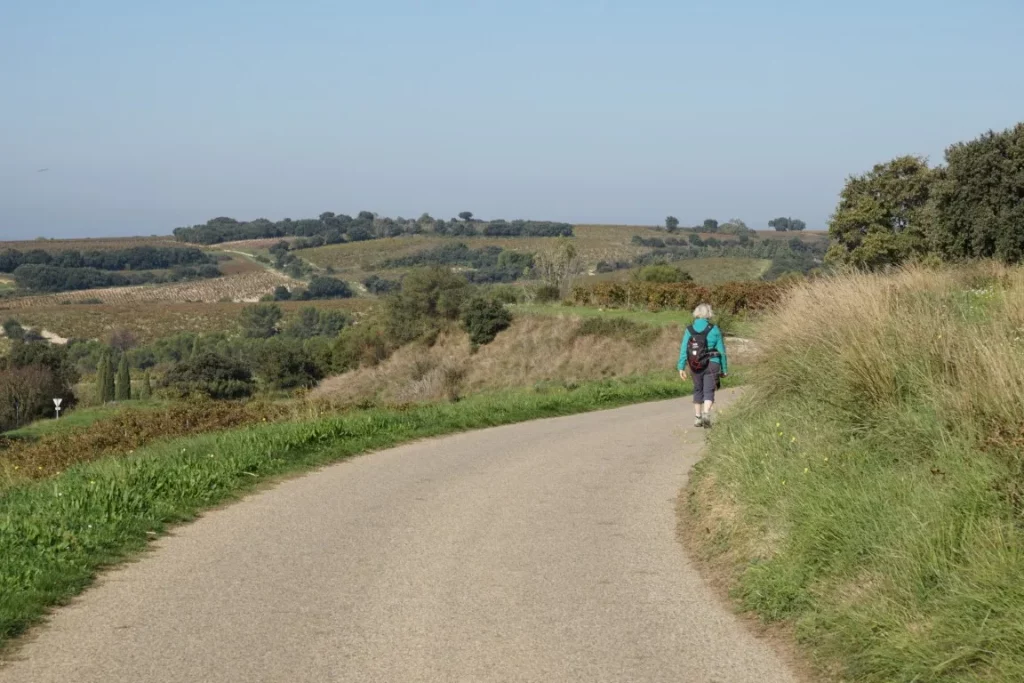
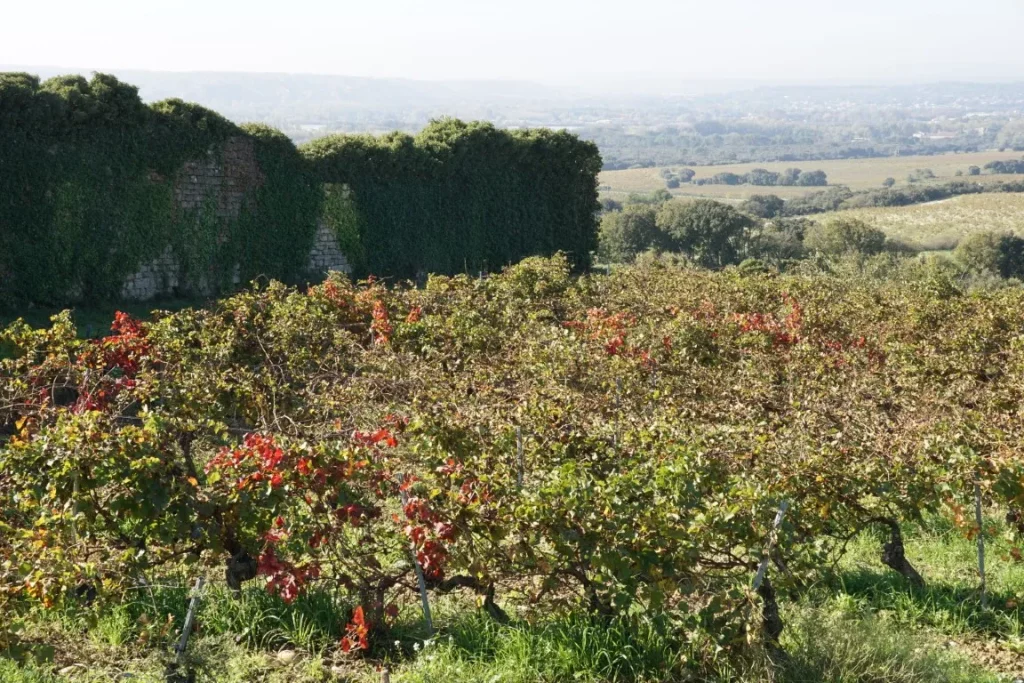
If you like wine, you may like it even more after seeing the beautiful vineyard landscapes on this tour, the white limestone soils, the grassy rows of vines, the wild arugula flowering between the rows and all of this under the bluest of blue Provence skies.
